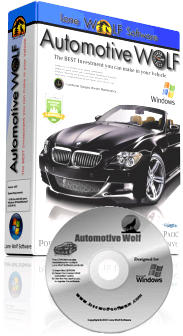|
Windows XP/7/8/10/11
|
 |
 No Risk 30 Day Free Trial |
HOME | INTRO | FEATURES | DOWNLOAD | PURCHASE | SCREEN SHOTS | REVIEWS | CAR CARE TIPS |
| Car Care Tips - Wheel Balancing |
| Wheel balancing is a crucial aspect of car
maintenance that ensures the even distribution of weight around a
vehicle's wheels and tires. It involves adjusting the balance of the
tire and wheel assembly by adding or removing small weights. Here's
why wheel balancing is essential and how it's done: **Importance of Wheel Balancing:** 1. **Smooth Ride**: Balanced wheels and tires prevent vibrations, which can lead to a smoother and more comfortable ride for both you and your passengers. Unbalanced wheels can cause your car to vibrate, particularly at certain speeds. 2. **Tire Wear**: Unbalanced wheels can lead to uneven tire wear. This not only reduces the lifespan of your tires but can also impact handling and traction. 3. **Safety**: Wheel imbalance can negatively affect your car's handling and steering response, potentially compromising safety, especially in emergency situations. 4. **Fuel Efficiency**: Unbalanced wheels can cause your vehicle to consume more fuel due to the extra effort required to overcome the vibrations. Properly balanced wheels can improve fuel efficiency. **How Wheel Balancing is Done:** Wheel balancing is typically performed by a qualified technician at an automotive service center and involves the following steps: 1. **Inspection**: The technician first inspects the tires and wheels for any visible damage, such as flat spots, bulges, or irregular wear patterns. 2. **Removal**: The wheels are removed from the vehicle one by one. 3. **Mounting on the Balancer**: Each wheel and tire assembly is placed on a wheel balancing machine, which checks for imbalances. 4. **Imbalance Identification**: The machine identifies the location and amount of imbalance (both static and dynamic). Static imbalance occurs when the weight distribution is uneven across the width of the tire, while dynamic imbalance occurs when there's an imbalance around the circumference. 5. **Weight Placement**: To correct the imbalance, small weights are attached to the rim of the wheel. These weights counterbalance the heavy spots, ensuring an even distribution of weight. 6. **Reinstallation**: After balancing, the wheels are reinstalled on the vehicle, and the lug nuts or bolts are tightened to the manufacturer's specifications. 7. **Verification**: The technician may conduct a final test to ensure that the wheel is now balanced and that there are no remaining vibrations. 8. **Repeat for All Wheels**: This process is repeated for all four wheels. It's important to note that wheel balancing is not a one-time job. Over time, as tires wear and small changes occur, the balance can shift. Regular maintenance, such as tire rotations and wheel balancing, helps ensure a smooth and safe driving experience while extending the life of your tires. Most manufacturers recommend balancing your wheels every 6,000 to 10,000 miles or when you notice signs of imbalance, such as vibrations at certain speeds. From Our Expert Technical Consultant: Out-of-balance tires will cause a car to vibrate at certain speeds, usually between 50 and 70 mph. A tire is out of balance when one section of the tire is heavier than the others. One ounce of imbalance on a front tire is enough to cause a vibration in the steering wheel at about 60 mph. To balance a wheel, the technician will mount it on a balancing machine which spins the wheel to locate the heavier part. He will then compensate for the heavy part by attaching a lead weight on the opposite side. Many people are pleasantly surprised at how smooth their car drives after balancing all four wheels. Most high quality tires will hold their balance fairly well and go out of balance very gradually. If you notice a vibration that wasn't there the day before, it is possible that one of the lead balancing weights fell off. If you feel the vibration mostly in the steering wheel, the problem is most likely in a front wheel. If the vibration is mostly in the seat, the problem is in the rear.For those of you who are very sensitive about vibrations and your shop can't seem to get that last bit of vibration out, check to see if you have locking wheel lugs. Some locking lugs are about 1.5 ounces heavier than the other lug nuts which translates to about 1/2 ounce at the wheel rim. Try putting a 1/2 ounce weight opposite the locking lug and see if it helps. |
Easily Track and Manage Maintenance Schedules for any type of Vehicle by Time, Distance or Hours
30 Day FREE Trial
HOME | INTRO | FEATURES | DOWNLOAD | PURCHASE | SCREEN SHOTS | REVIEWS | Videos | FAQ | EULA | CONTACT US | CAR CARE TIPS |
Copyrightę Lone Wolf Software - www.lonewolf-software.com
Automotive Wolf Car Maintenance Software can also be found at :
Car Care | Contact Management | Home Inventory & Management | Backup | Text & Document Organization | Web Site Monitoring | ToDo Lists



